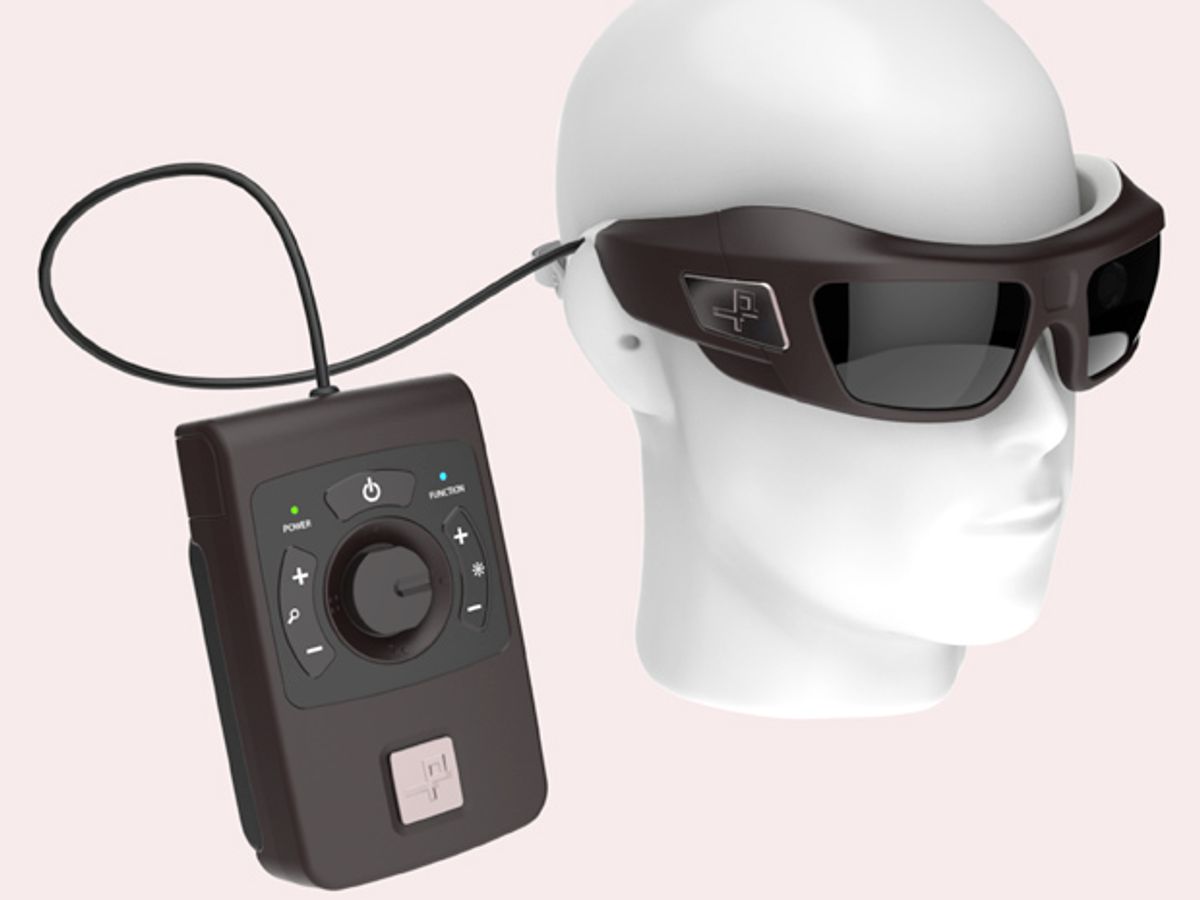Writers are going to need a new metaphor. For centuries, “bringing eyesight to the blind” signaled something miraculous. But with the first visual prosthetic now on the market and a number of others close behind, curing a person of blindness may soon seem like less of a miracle and more of a routine medical correction.
At the IEEE Neural Engineering meeting in Montpellier, France last week, researchers described their progress toward this goal. In one talk, a Stanford scientist described a clever visual prosthetic that’s photovoltaic, thus doing away with batteries or bulky recharging systems. The tech is being commercialized by the French company Pixium Vision, with clinical trials scheduled for 2016.
The tiny chip sits behind the retina, the part of the eye that contains the photoreceptor cells that respond to the light of the world by triggering electric pulses in other cells. Those pulses are part of a chain reaction that sends information up the optic nerve to the brain. In certain retinal diseases, the photoreceptor cells die off, but the remaining relay cells are undamaged. Different visual prostheses target different cells within this system for electrical stimulation.
Henri Lorach (from Daniel Palanker’s lab at Stanford) says his team’s advance is in using the same light signal to both transmit the image of the outside world and to power the implanted chip [pdf]. The most advanced version of the chip has 70-micron pixels, each of which includes photodiodes and a stimulating electrode. “We cannot use ambient light to power these devices, because it’s not strong enough,” Lorach said, “so we use high-powered infrared light.”
When this system is tested by humans, the subjects will wear goggles containing a recording camera. A connected “pocket processor” will convert that recording into an infrared image, which the goggles will then beam into the eye. The chip receives the pattern and stimulates the underlying cells accordingly. In testing on rats [pdf], the researchers determined that nuerons in the brain respond to this stimulation in much the same way they respond to natural light, and that the power of the infrared light necessary to induce that reaction was well below the safety threshold.
Lorach’s team also got promising results when it came to visual acuity. Their rats achieved a vision level that translates to 20/250 in humans, which means the person would probably be able to read the top letter on an eye chart, but none of the letters below. With the next-generation device, Lorach said, “we’re working to get to 20/120, which would be below the limit of legal blindness” in the United States.

These results signal an impressive leap forward. Second Sight, the company that got FDA approval for the first visual prosthesis in 2013, currently offers patients about 20/1300 vision. The German company Retinal AG, whose system has been approved by European regulators, offers about 20/500.
Australia’s Bionic Vision is planning a clinical trial of its own technology in the next year, said researcher Nigel Lovell at the Neural Engineering meeting. Lovell and other speakers also emphasized the need to study the code of electric pulses by which the eye’s cells transmit information, in hopes of dramatically improving the crude vision produced by current prosthetic devices.
Eliza Strickland is a senior editor at IEEE Spectrum, where she covers AI, biomedical engineering, and other topics. She holds a master’s degree in journalism from Columbia University.



